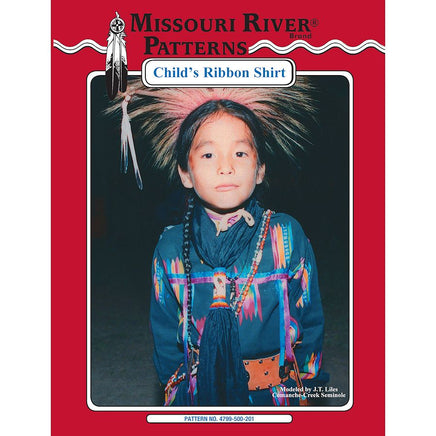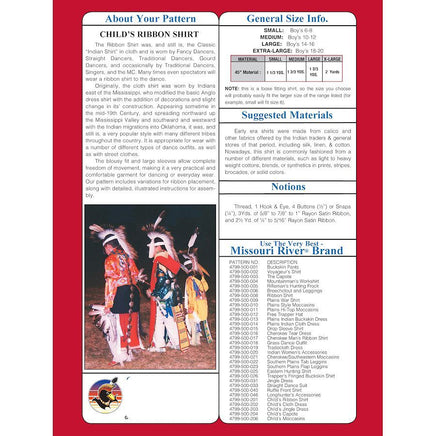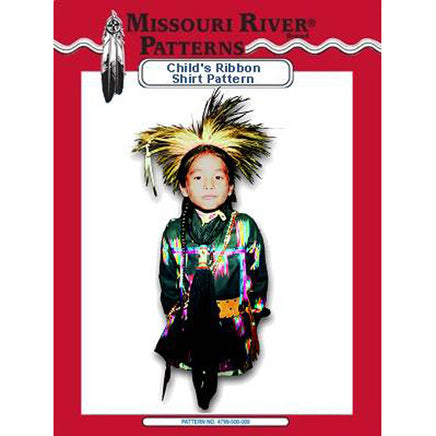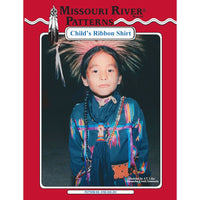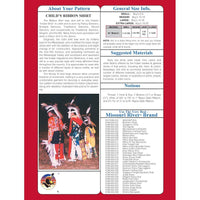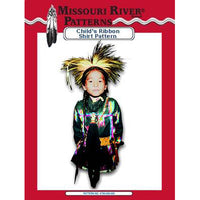Child's Ribbon Shirt Pattern represents a shirt common to many tribes from east to west. This style shirt is popular with both men and women and has been in vogue since the introduction of cloth to the Indian trade.
Now available in children’s sizes 4-14, for both boys and girls. Complete with detailed instructions on layout, cutting, sewing and decoration. This style shirt is worn by most tribes throughout the country.
About Your Child's Ribbon Shirt Pattern
The Ribbon Shirt was, and still is, the Classic “Indian Shirt” in cloth and is worn by Fancy Dancers, Straight Dancers, Traditional Dancers, Gourd Dancers, and occasionally by Traditional Dancers, Singers, and the MC. Many times even spectators will wear a ribbon shirt to the dance.
Originally, the cloth shirt was worn by Indians east of the Mississippi, who modified the basic Anglo dress shirt with the addition of decorations and slight change in its’ construction. Appearing sometime in the mid-19th Century, and spreading northward up the Mississippi Valley and southward and westward with the Indian migrations into Oklahoma, it was, and still is, a very popular style with many different tribes throughout the country. It is appropriate for wear with a number of different types of dance outfits, as well as with street clothes.
The blousy fit and large sleeves allow complete freedom of movement, making it a very practical and comfortable garment for dancing or everyday wear. Our pattern includes variations for ribbon placement, along with detailed, illustrated instructions for assembly.
Notions & Tools
Thread, 1 Hook & Eye, 4 Buttons (½”) or Snaps (¼”), 3Yds. of 5/8” to 7/8” to 1” Rayon Satin Ribbon, and 2½ Yd. of ¼” to 5/16” Rayon Satin Ribbon.
General Size Info
SMALL: Boy’s 6-8
MEDIUM: Boy’s 10-12
LARGE: Boy’s 14-16
EXTRA-LARGE: Boy’s 18-20
Material Requirements
NOTE: this is a loose fitting shirt, so the size you choose will probably easily fit the larger size of the range listed (for example, small will fit size 8).
Suggested Materials
Early era shirts were made from calico and other fabrics offered by the Indian traders & general stores of that period, including silk, linen, & cotton. Nowadays, this shirt is commonly fashioned from a number of different materials, such as light to heavy weight cottons, blends, or synthetics in prints, stripes, brocades, or solid colors.

